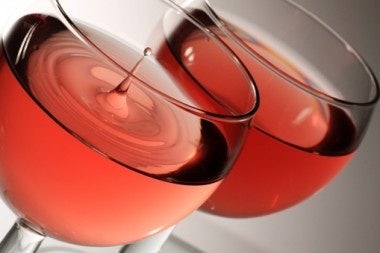Younger, Female Drinkers Increasingly Turning To Sweeter And Sparkling Wines, Eroding Dominance Of Dry Reds#

Rosé producers are betting that shifting wine consumption dynamics in China will increase demand
China's wine market, long the domain of dry reds, is getting sweeter, more effervescent and--increasingly--pinker. At least that's the contention of France's Conseil Interprofessionnel des Vins de Provence (CIVP), which spent the month of May promoting rosé in Guangzhou, Beijing, Shanghai and Hong Kong. According to the CIVP, which represents wineries from the Provence region of southern France, rosé exports to China increased 523 percent between 2006-2010, with China importing nearly 15,000 liters of Provencal rosé wine (valued at over US$130,600) last year. While this pales in comparison to the 30 million liters of Bordeaux wines imported by China in 2010, it's nothing to write off. As Jing Daily has previously noted, younger and female wine drinkers are increasingly becoming a force in the Chinese wine market, and as they're less chained to red wine than their older, male counterparts. As such, producers of sweeter whites and sparkling wine have moved quickly to court these important demographics.
In order to increase their presence in the China market, recently more than 20 Provence winemakers joined together to create the "China-Provence Club," which will take part in 2011 wine events in Hong Kong and Shanghai, hold meetings with local traders and importers, organize wine tastings throughout the country and boost marketing efforts in the Greater China region. While these producers already have their work cut out for them, since consumer education about rosé wine remains low, they may get some unexpected assistance from domestic Chinese winemakers, some of whom are actively promoting rosé appreciation. From the Chinese industry site FoodQS (translation by Jing Daily team):
Despite years of hard work, rosé wine still remains in the early stage of development in China. Aside from Abloom, Shanxi Grace Vineyard, and a few other winemakers that produce rosé wine, most domestic producers continue to focus on the comparatively lucrative red wine segment.
Although red wine still has a strong advantage in the Chinese market, as people develop a more in-depth knowledge of wine, we'll see those who follow their own taste lead to a boom among non-reds. So in this sense, the rise of rosé wine in China will only be a matter of time. Given the country's huge population base and spending power, it won't be hard for rosé wine to hit the mainstream.
While there's reason to be bullish about rosé's prospects in China, the fact that consumer education remains, on the whole, extremely low is a serious obstacle. As the Global Times recently pointed out, wine sellers often encounter resistance from consumers who mistakenly think rosé wine is simply low-quality red and white wine blended together. However, as the article goes on to suggest, the relatively open-minded nature of wine drinkers in China's hotter south -- a region that turned to white wine before the north -- could provide rosé producers with the "in" they've been searching for. From the Global Times (translation by Jing Daily team):
Since the 1990s, China's mainstream wine market has been dominated by dry, "hot" red wines. But in recent years, as consumers have become more informed, white wine began to catch on in some southern areas. However, very few companies produce rosé wine in China, and compared to red and white wine, domestic consumers have had less access to rosé over the past several years so they're less accustomed to it.
Aside from the limited production capacity, Chinese wine drinkers also have an irrational preference for red wine, so in a way rosé wine has been "left out." As a wine producer in Provence recently told reporters, "I recommended rosé wine to a Chinese partner, but he said [Chinese drinkers] aren't interested in it. He said they just want red wine. Afterwards, I learned that many Chinese think rosé wine is of poor quality. It's funny, many entry-level wine drinkers assume that rosé wine is just red and white wine blended together. They don't know that rosé has its own production process, which is completely different."
While changes in consumer attitude towards rosé aren't that obvious in China, it's increasingly entering the mainstream in the area around Shenzhen and Guangzhou, up to Hangzhou [in south China], as well as second-tier cities like Chengdu.
The taste of rosé wine is considered an approachable wine for beginners, but in China it has also captured the hearts and minds of female wine enthusiasts. Wine lover Yang Huareng (杨桦仍) clearly remembers her first exposure to rosé. Said Yang, "What first caught my attention about rosé and made me fall in love with it is its fresh pink color. I swirled it around the glass and appreciated its aroma then took a sip. Its lingering notes of raspberry and strawberry really stuck with me."
As more adventurous wine drinkers turn away from heavier, more alcoholic red wines and towards sweet whites, sparkling wine and rosé, we can expect to see the dynamics of the Chinese wine market undergo a fundamental shift in coming years. However, like most things in China, this dynamic will likely be geographical in nature, beginning in the south (where chilled wines enjoy greater popularity, and milder cuisine styles suit rosé and whites) and gradually spreading to the north.